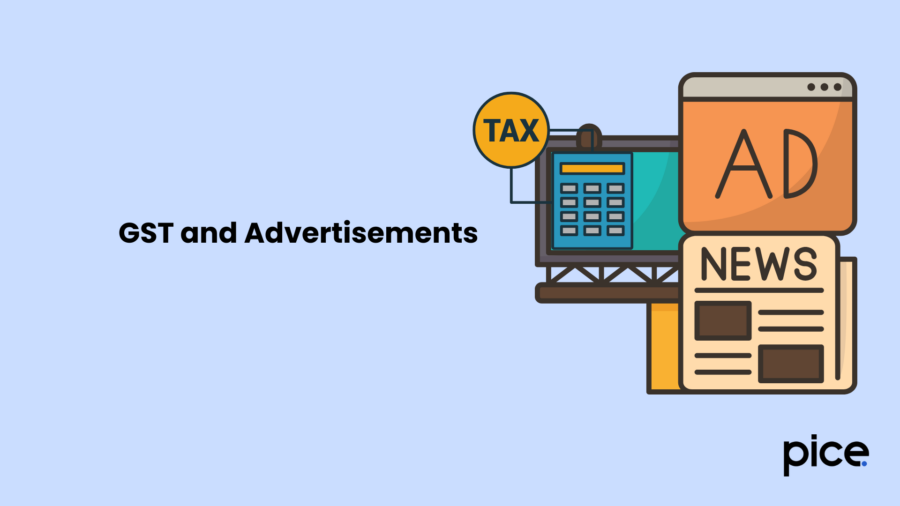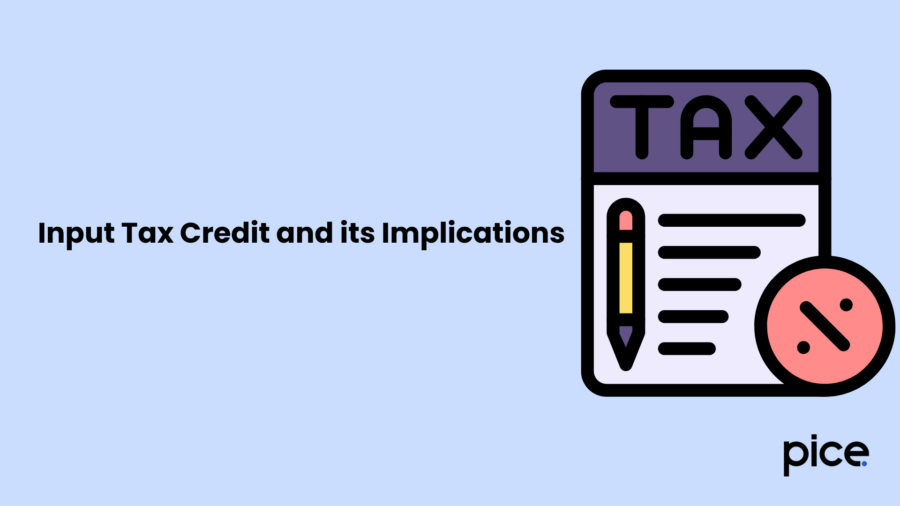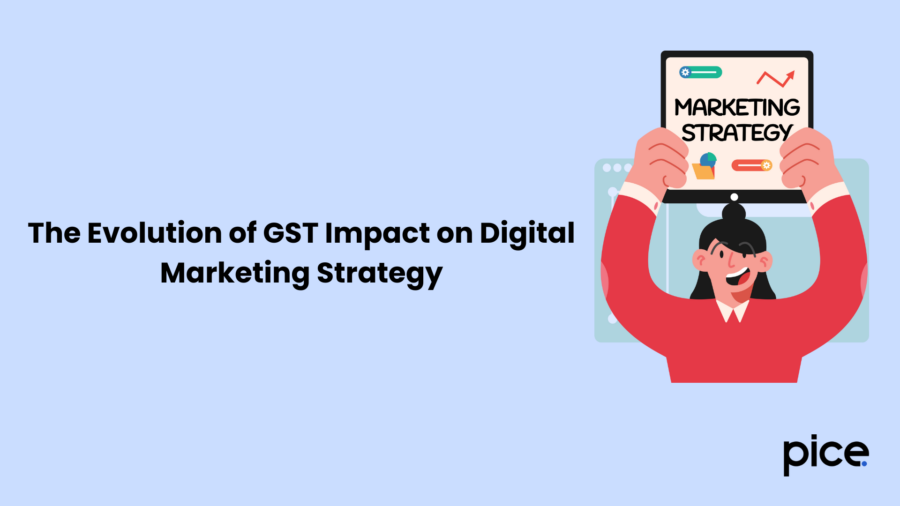Major Impact of GST on Digital Marketing Processes
- 23 Jun 25
- 10 mins

Major Impact of GST on Digital Marketing Processes
- GST and Advertisements
- Tax on Online Subscription Services
- Input Tax Credit and its Implications
- GST Impact the Digital Marketing Sector on E-commerce and Affiliate Marketing
- Adaptation and Compliance Challenges
- The Evolution of GST Impact on Digital Marketing Strategy
- Transition Period Challenges
- GST as a Catalyst for Digital Transformation
- Enhanced Consumer Insights
- Conclusion
Key Takeaways
- GST streamlined tax structure across digital marketing services, unifying multiple indirect taxes under an 18% rate.
- Input Tax Credit (ITC) benefits larger firms, reducing their tax burden, while smaller businesses face increased operational costs.
- Online tools and SaaS subscriptions, especially from foreign vendors, fall under OIDAR and RCM, complicating compliance and budgeting.
- GST mandates digital invoicing, return filings, and tax remittance, accelerating the digital transformation of marketing firms.
- Enhanced transparency and centralized data under GST empower businesses to refine customer insights and improve targeted advertising.
GST is one of the most influential factors to date that has significantly propelled India's enhanced digital marketing sector. It was established in 2017 to replace multiple indirect taxes, thus instituting a better and more unified tax structure. Today, digital marketing services like social media marketing and online ads are being taxed at 18%. But as much as the tax structure has been simplified by GST, it has actually increased costs especially to small entrepreneurs.
The larger firms continue to enjoy reduced tax burdens because of input tax credits. Therefore, the impact of GST is such that it is very significantly reflected in the digital marketing sector in terms of enhanced transparency and business compliance in dealings, as well as in high manufacturing expenses and compelling businesses to efficiently restructure budgets.
Read on to know much more about the GST effect on the Indian digital marketing sector and beyond.
GST and Advertisements

GST impacts the digital marketing and advertising sectors, which depend heavily on online advertising and marketing. These services and products were previously subject to substantial restructuring with GST implementation.
Previously, service tax applied to advertising services, and firms had to navigate complicated tax codes. GST simplified this by assigning a common tax framework to advertising and marketing services. This move created a mix of benefits and challenges. Organizations thus also received a lower general tax burden but also faced new compliance requirements.
Tax on Online Subscription Services
The digital marketing landscape thrives on online subscription services, encompassing everything from vital SaaS tools (like CRM, SEO, and analytics platforms) to advertising budgets on platforms such as Google Ads and Facebook, and even subscriptions for stock images or design software.
The introduction of GST brought a significant shift in how these services are taxed. Previously subject to varying service taxes, these subscriptions now fall under the purview of GST, typically attracting an 18% rate. A key complexity arises with services procured from overseas providers.
Under GST, these often qualify as Online Information Database Access and Retrieval (OIDAR) services. This means either the foreign supplier must register in India and charge GST, or the Indian recipient business must pay the tax under the Reverse Charge Mechanism (RCM). While GST registration allows businesses to claim Input Tax Credit (ITC) on these expenses, effectively neutralizing the tax outflow for many, it necessitates meticulous record-keeping and compliance.
This shift demands that digital marketers carefully budget for GST on all subscription costs and manage their ITC claims diligently to maintain cost-efficiency and avoid compliance issues.
Input Tax Credit and its Implications

Here is a detailed overview of the input tax credit and its implications on the digital marketing sector in India:
- The introduction of input credits creates a long-lasting impact on the fee dynamics of digital marketing and advertising agencies.
- One of the crucial capabilities of the GST gadget is the supply of Input Tax Credit (ITC), which allows corporations to activate taxes paid on inputs against taxes that might be prone to the risk of paying at the output.
- Businesses opt to claim credit, particularly for taxes paid on inputs, reducing tax legal responsibility.
- GST significantly impacts the virtual advertising area through the introduction of the Input Tax Credit, which provides agencies with the opportunity to claim credit scores for taxes applicable to input payments.
- The input tax credit contributes significantly to price savings and forces groups to spend money on advanced technology, thereby enhancing their digital advertising talents.
GST Impact the Digital Marketing Sector on E-commerce and Affiliate Marketing
Continue exploring to find out how GST impacts the digital marketing sector on e-commerce and affiliate marketing:
- E-trade and associate marketing activities are essential components of the digital marketing and advertising industry.
- With GST implementation, significant changes are brought about within the taxation structure of these transactions, thereby influencing digital entrepreneurs to collaborate following e-trade structures and affiliates.
- Following the GST regime, e-trade operators have now become susceptible to the remittance of taxes on the supply of goods and services facilitated through their platforms.
- This shift thereby creates a significant effect on digital marketers, especially those who are involved in marketing and associate advertising.
- The need for compliance with GST rules has significantly added layer to the collaboration carried out between e-trade structures and entrepreneurs.
Adaptation and Compliance Challenges
The transition to the Goods and Services Tax (GST) presented significant adaptation and compliance hurdles for the digital marketing sector using different digital platforms in India. Initially, agencies grappled with understanding the correct classification of diverse services like SEO, content creation, social media management, and PPC advertising under the appropriate Service Accounting Codes (SAC) and GST rates.
Determining the 'Place of Supply' was particularly complex, especially for services rendered to clients across different states or overseas, dictating whether IGST or CGST/SGST was applicable.
This required revising invoicing systems to include mandatory GST details and adapting to more frequent, technology-driven compliance requirements like monthly return filing. Agencies also faced challenges in accurately claiming Input Tax Credit (ITC) and ensuring their accounting software and staff were equipped to handle the new regime, initially increasing operational overhead and demanding significant administrative effort.
The Evolution of GST Impact on Digital Marketing Strategy

The Goods and Services Tax (GST) has revolutionised digital marketing service sectors in India. In the beginning, businesses were unsure about what tax rates to use regarding online ads and services. GST, in time, clarified that businesses transfer tax rates into a clear calculation of tax liability, which made it all easier for companies.
At present, digital marketing services implement about 18% GST, which impacts ad budgets. While transparency around tax liability and clarity around advertising spend has improved, the cost is the trade-off, which has led to companies attempting to make the most efficient use of their digital marketing.
Transition Period Challenges
Throughout the transition period, organisations encountered obstacles in understanding the complexities of GST compliance. The ambiguity regarding the types of virtual advertising services and the format of the new tax regime slowed down the process. Smaller and medium-sized organisations, particularly, found themselves navigating several guidelines. However, this initial confusion incubated innovation within the industry.
GST impacted the digital marketing industry, and firms began to provide focused consultancy services to assist organisations in comprehending and complying with the GST regulations. This sense of the support supplied the foundation for a smoother transition and enhanced culture of compliance within the digital marketing sector.
GST as a Catalyst for Digital Transformation
The implementation of the Goods and Services Tax (GST) in India served as a significant, albeit initially challenging, catalyst for widespread digital transformation across businesses. Moving away from varied, often paper-based legacy tax systems, GST mandated a unified approach towrads digital services.
Key requirements such as online registration, mandatory digital filing of monthly/quarterly returns, electronic tax payments, and standardized electronic invoicing (e-invoicing) through the centralized GST Network (GSTN) portal rendered traditional compliance methods inefficient and impractical.
This compelled businesses with regard to their size and manner to take swift proceedings on the adoption and updating of digital tools. Accounting software, ERP systems, and dedicated compliance solutions were now necessities rather than luxuries, thereby ensuring these businesses could manage their complex calculations, keep accurate digital records, and, most importantly, guarantee compliance on schedule with new laws so as to speed India's overall digital adoption curve.
Enhanced Consumer Insights

GST has enhanced the ability of businesses to know their customers better through improved customer intelligence in the realm of online marketing. It assured businesses of a single tax system for all states, which helped to trace the taxable business sales associated with customers, observe their preferences, analyse habits, and keep an eye on spending patterns more efficiently.
Having a single tax structure has enabled businesses to follow and analyze their data regarding consumer preferences over various products and across states without being burdened with multiple tax regimes. This eventually led to better targeting advertising, where brands can hit the precise target audience much better.
Conclusion
In short, GST has changed the digital marketing sector in India by formalising and streamlining the tax process. While there are some additional costs involved in doing business, GST has many upsides, including better financial planning and transparency for all involved.
A standard rate of tax structure allows digital marketers to assess consumer data better when analysing and preparing their campaigns, which will ultimately improve targeted advertising. Despite such challenges, GST has encouraged all businesses to rethink their advertising budgets and invest in more effective cost-marketing solutions. In the future, GST should provide more stability and helpful growth to India's digital marketing sector.
💡If you want to streamline your invoices and make payments via credit or debit card or UPI, consider using the PICE App. Explore the PICE App today and take your business to new heights.



















